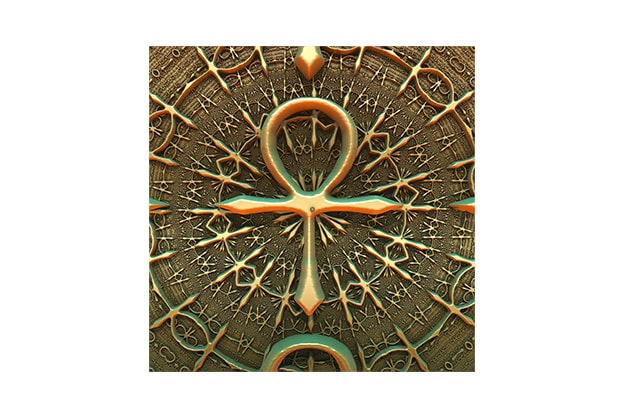
This symbol, also referred to as the Key of the Nile, is an ancient hieroglyphic Egyptian sign that consummated the concept of life in Egyptian mythology and spirituality. Its usage in Egyptian art is common with known Egyptian deities often seen carrying the symbol by its loo and or placed in each hand of the gods. The symbol’s usage as a symbol of life is in reference to both physical and eternal life.
Origin
Attempting to pin point the exact origins of the symbol and it use presents one with insufferable consequences of uncertainty, misgivings, and a complex web of suppositions and arguments. E.A Wallis budge and other Egyptologists have posited that perhaps the symbol might have originally represented the belt buckle used by Isis— the mother goddess. This position was further augmented by Wolfhart Westendorf’s idea that the symbol, as well as the Knot of Isis, was considered as ties fit for use during ceremonial functions. Besides, Gardiner added further possible uses of the Ankh as having been used as a sandal strap. In this context, it only becomes logical that the loop, then, must have been used as a support going round the ankle.
Other interesting ideas as to the origin and use of the ankh point to the fact that symbol actually represented the manner in which the sun covered the horizon through its daily traversing from the east to west. The loop, in these arguments, was considered a representation of River Nile. Further, the symbol was considered to be a divine representation of the cross and the oval (respectively representing the male and female symbols of the deities Osiris and Isis). As a result, this was a symbol whose very institution and usage embodies a grand union of heaven (and its occupant) and earth (and its occupants).
In some Egyptian Art, the ankh has been used as a symbol of conception— an idea emanating from the ancient Egyptian belief that semen always comes from the spinal cord.It is a common sight on Egyptian tombs paintings and corresponding Egyptian art. Further, in some alchemists’ wide ranging views of the symbol, it was used as a representation of the female womb, the Roman goddess Venus and the planet Venus. Hermeticism, on the other hand, suggests what may appear, to the normal mind, a preposterous rendering: That God is both male and female!
Description & Usage
Literally speaking, the Ankh denotes Latin version of the phrase crux ansata. This refers to a cross with a handle (loop). Closer scrutiny reveals that the Ankh points to a heavenly being bending down to reach humans in their efforts to reach up. It reveals a common objective where the sought (heavenly being) is also seeking (humans). The result is a fusion of the divine with humanity. In that fusion, the idea of the ankh representing breath of life is born.
Proponents and users of the symbol argue that it is the original cross. It was used independently or in connection it other hieroglyphs as an amulet and an indication of both strength and health. The fact that it is used in close association with the material things like water is a clear indication that the Egyptians associated it with the concept of regeneration of life and immortality— a notion that was commonly associated with Egyptian spirituality. The fact that the symbol has the appearance for a key has birthed diverse claims that the symbol could unlock the gates of death by groups even other than the Egyptians. Rosicrucians, or example, consider the symbol as an important key ital. for any quests of life after death.
Conclusion
Undoubtedly, irrespective of the mystery with which the origin and exact application of the ankh has been shrouded in, it remains an integral component of Egyptian mysticism, spirituality and beliefs. As has been noted elsewhere in this article, the ankh is sometimes is used, often, in combination with other symbols such as the djed and was (both representing stability and power respectively). The symbol, however, should not be confused with the tyet which can is associated with chthonian goddesses who both bear the sign between their breasts (a knot and a jutting circlet).

